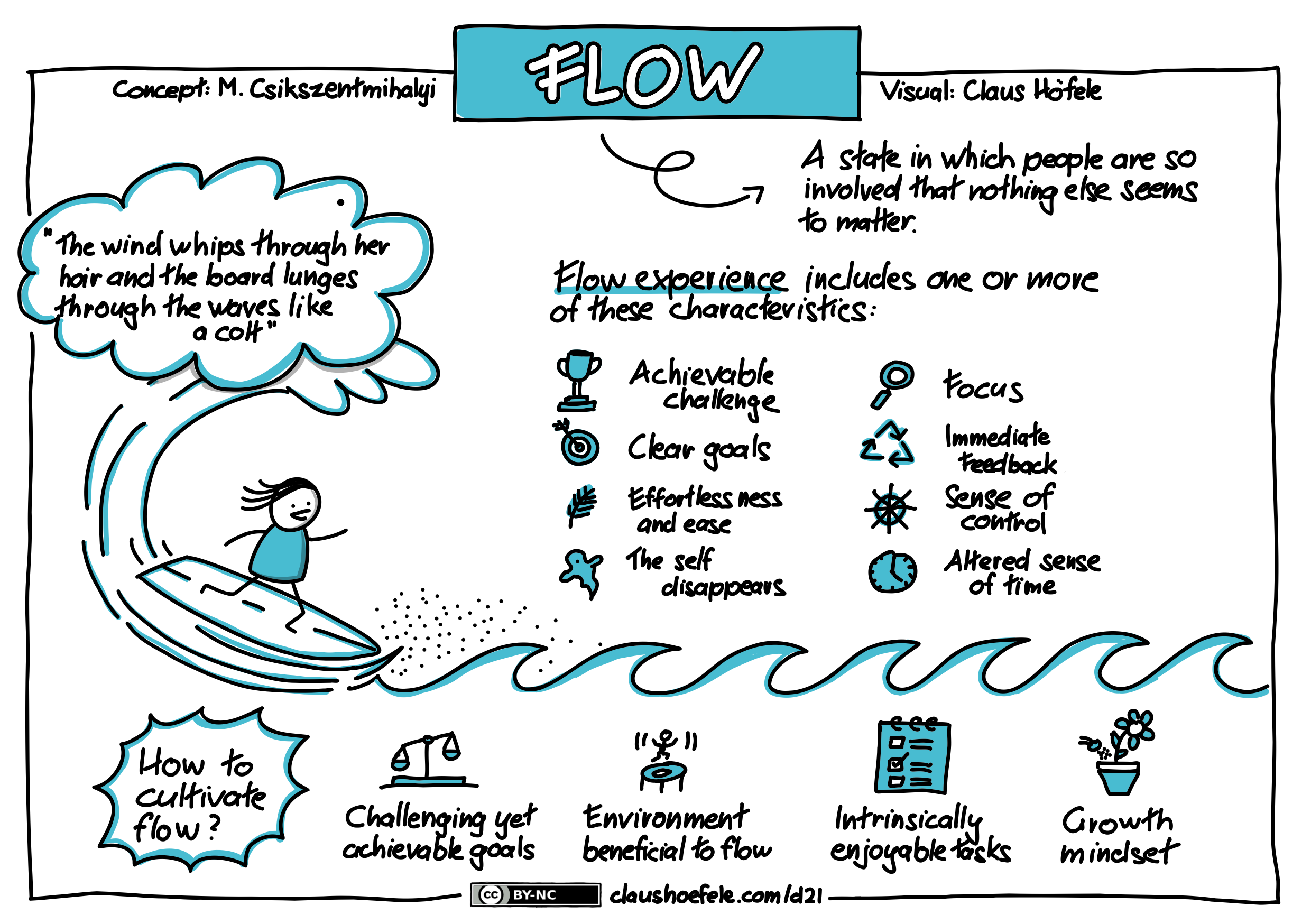Flow ✍🏻 Drawn to Leadership
Flow is More then Productivity

Subscribe to Drawn to Leadership to receive email notifications about new issues.
When I moved to Tokyo in 2004, Akio Morita’s book “Made in Japan” was mandatory reading.
The iPhone hadn’t been invented yet. That didn’t stop people in Japan from surfing the internet on their mobile phones. And paying with contactless cards built into their devices. My job was to work on mobile phones for Sony Ericsson and bring these advances to the European market.
From Morita-san's book, I learned that the founders of Sony had a clear vision for its workplace culture. Especially for engineers. The vision that creating a fun environment was critical to the company's success.
As stated in the founding prospectus, the goal was to:
"Establish a stable workplace where engineers could work to their heart's content in full consciousness of their joy in technology and their social obligation." (Sony Founding Prospectus)
During my time in Japan, Sony released hit products such as the Playstation Portable, the Cyber-shot DSC-R1 camera, and the Sony Ericsson 800 Walkman phone.
I wondered: What separates companies that build hit products from companies that don't?
Sony's founders understood this from the beginning. 25 years later, psychologist Mihaly Csikszentmihalyi would make it the focus of his research. He began studying flow, a state of mind in which people are highly focused, engaged and motivated, leading to increased productivity.
Flow is More then Productivity
Mihaly Csikszentmihalyi's book "Flow" discusses the concept of optimal human experience. Known as flow, a person's thoughts are completely absorbed in an activity. To the point where nothing else matters.
Through flow, individuals can achieve intense focus, happiness, and fulfillment. They enter a state of presence in which they perform at their best.
This is where you come in as a leader. Bringing flow into the workplace requires good leadership. And a commitment to fostering a culture of independence, competence, and purpose. It requires an environment that offers challenging yet achievable tasks, that provides clear goals and feedback, and that allows people to focus. Leadership attention to flow will have a significant impact on productivity and business performance.
But Csikszentmihalyi argued that flow is more than productivity. It's also a state of great psychological well-being. By understanding the factors that contribute to flow, we can experience it more often. And be happier in the process.
The Elements of Joy
Most people equate losing a sense of time with being in flow. However, Csikszentmihalyi identified eight factors that identify flow. He found that people report at least one, and often all, of the following when describing positive experiences:
- Achievable challenge: The task was neither too easy nor too difficult.
- Clear goals: People had a clear sense of what they were trying to achieve.
- Effortlessness and ease: The worries and frustrations of everyday life didn't exist.
- The self disappears: People lose awareness of themselves as separate from the activity.
- Focus: The activity became the center of their attention.
- Immediate feedback: People received clear feedback about their progress.
- Sense of control: People felt in control of the activity.
- Altered sense of time: People felt that time flew by.
How to Cultivate Flow at Work
What’s Really Required for Flow – Fun, Fear, Focus
As a neuroscientist, Friedericke Fabritius approaches flow from the perspective of brain science:
Wouldn’t it be great to gain a fast track to flow? Thanks to brain science, you can. We now know that three distinct neurochemicals produce this unmistakable feeling: dopamine, noradrenaline, and acetylcholine. (Friederike Fabritius)
With the right mix of neurochemicals, anyone can achieve flow. And you don't even have to remember their intimidating names. Friederike Fabritius has a simple formula: fun, fear, and focus.
Fun: We've come to work for a reason. In this context, fun is about motivation and playing to your strengths. Both facets are individualistic, so you'll need to find out what works for each person. Strength finders, such as VIA Character Strengths, can help you find the right approach. External benefits also have a place, but they can't compete with intrinsic rewards.
Fear: Flow requires a balanced challenge. Look for tasks that are neither overwhelming nor boring. Again, what people find challenging depends on their individual chemistry. A sensation-seeker loves the challenge of a late customer need. But a calm person gets excited about researching a topic for weeks to get to the bottom of a problem.
Focus: Multitasking kills focus. Yet, how often do we work on many issues at once. A great work environment limits the number of projects a person has to juggle. A quiet home office is also more conducive to focus than a busy office. Flexibility is key. A team needs a good mix of social interaction, close collaboration, and focused work.
As a leader, you can influence all three ingredients – for yourself and for others. Put all three together and you have flow.
The Pomodoro Technique – When you Need help with Focus
Francesco Cirillo developed the Pomodoro Technique while studying at university. He found that short bursts of work can increase focus and create flow.
Pomodoro is the Italian word for tomato. And the tomato-shaped kitchen timer used to stop time gave the technique its name.
According to Wikipedia, the original technique consists of six steps:
- Decide on a task you want to accomplish
- Set the Pomodoro timer (usually for 25 minutes)
- Work on the task
- Finish working when the timer goes off and take a short break (typically 5-10 minutes)
- Return to step 2 and repeat until you have completed four Pomodoros
- After completing four Pomodoros, take a long break (typically 20-30 minutes) instead of a short break. When the long break is over, return to Step 2
More of this? Subscribe to Drawn to Leadership to receive email notifications about new issues.